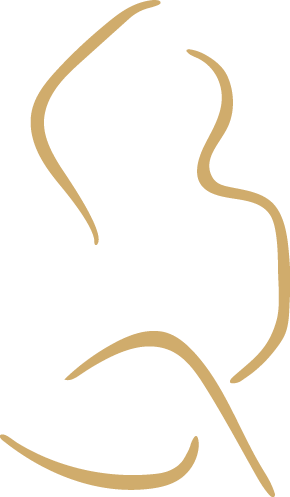
Herbal medicine, also called botanical medicine or phytomedicine, refers to the use of a plant’s seeds, berries, roots, leaves, bark, or flowers for medicinal purposes. It is the oldest and most widely used system of medicine in the world today. It is used in all societies and is common to all cultures.
The history of herbal medicine
Plants had been used for medicinal purposes long before recorded history. For example, ancient Chinese and Egyptian papyrus writings describe medicinal plant uses. Indigenous cultures (such as African and Native American) used herbs in their healing rituals, while others developed traditional medical systems (such as Ayurveda and Traditional Chinese Medicine) in which herbal therapies were used systematically. Scientists found that people in different parts of the globe tended to use the same or similar plants for the same purposes.
In the early 19th century, when methods of chemical analysis first became available, scientists began extracting and modifying the active ingredients from plants. Many modern pharmaceuticals have been modeled on, or derived from chemicals found in plants. An example is the heart medication digoxin derived from foxglove (Digitalis purpurea). Recently, the World Health Organization estimated that 80% of people worldwide rely on herbal medicines for some aspect of their primary health care.
How do they work?
For most herbs, the specific ingredient that causes a therapeutic effect is not known. The therapeutic activity of a plant is due to its complex chemical nature with different parts of the plant providing certain therapeutic effects.
Herbal medicine is increasingly being validated by scientific investigation, which seeks to understand the active chemistry of the plant. Using plants as medicine provides significant advantages for treating many conditions.
Many factors determine the herb’s effectiveness. For example, the type of environment (climate, bugs, soil quality) in which a plant grew will affect its components, as will how and when it was harvested and processed.
How are herbal medicines used?
We all consume herbal medicines regular in dietary forms. The sprinkling of cinnamon on porridge, a cup of peppermint tea, or fresh parsley chopped into a salad. All of these applications are considered dietary prescriptions. They provide gentle therapeutic and gastronomic benefits, but their medicinal benefit is limited. It is by the considered prescription of medicinal strength herbal medicines that real therapeutic benefits can be attained.
Herbal medicine therapeutically supports and treats almost all complaints and conditions. A herbal dispensary contains hundreds of individual herbal medicines from a variety of herbal disciplines including Western herbal Medicine (European), Traditional Chinese Herbal Medicine, Ayurvedic Herbal Medicine, Native American Herbal Medicine, Traditional Aboriginal Herbal Medicine and others.
Herbal Medicines come in a number of preparations including liquid (alcohol and glycerine extracted), powder, tablet, capsule and tea forms. They are best taken under the guidance of a qualified and highly trained practitioner that has taken a full history and has considered your individual health status and current medications. When professionally prescribed, they are safe, effective and supportive to your health care needs.
Several herbal medicines are often prescribed in combination to enhance effectiveness and increase synergistic effects. Qualified Herbal Medicine Practitioners consider many variables with their prescriptions and have the advantage and ability of individualised prescriptions when formulating and compounding your liquid herbal formula. At times, tablet, capsule or tea preparations will be recommended but the advantages and disadvantages will be discussed thoroughly with you before the prescription is determined.
Common herbal medicine prescriptions
Gingko (Gingko biloba)
Gingko, particularly a standardized extract known as EGb 761, appears to produce improvements in awareness, judgment, and social function in people with Alzheimer’s disease and dementia. Randomized controlled studies assessing the use of ginkgo supplements for Alzheimer’s disease in individuals older than 65 years have produced positive results.
Saw palmetto (Serenoa serrulata)
Saw palmetto is used by millions of men throughout the world for the treatment of benign prostatic hyperplasia (BPH). The evidence suggests that saw palmetto provides mild-to-moderate improvement in urinary symptoms and flow measures. Saw palmetto produces similar improvement in urinary symptoms and flow compared to finasteride (Proscar), a pharmaceutical drug used in BPH, and is associated with fewer adverse treatment events.
St. John’s wort (Hypericum perforatum)
St. John’s wort is well known for its antidepressant effects. The clinical efficacy of some standardised St. John’s wort standardised extracts in the treatment of mild and moderate depression has been demonstrated in multiple controlled clinical trials.
Valerian (Valeriana officinalis)
Valerian has had a long tradition as a sleep-inducing agent. It works by restoring one’s sleeplessness over time eventually reducing the need for the prescription with its therapeutic restoration to the nervous system. In addition, it has an added benefit of producing no hangover feeling the next day.
Echinacea (Echinacea spp.)
Echinacea has been shown to improve the body’s natural immunity. Echinacea is one of the most commonly used herbal products. A meta-analysis of 14 clinical studies evaluating the effect of Echinacea on the incidence and duration of the common cold found that Echinacea supplements decreased the odds of developing the common cold by 58% and the duration of a cold by 1.4 days.
©Leah Hechtman 2017
Please share this article with the buttons below.
